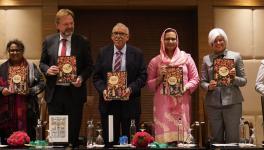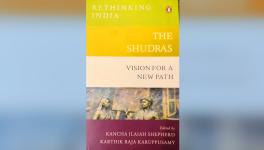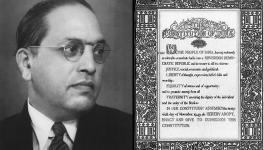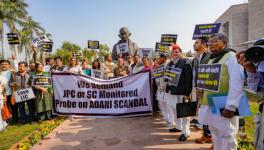Why the March of Secularism in India Has Not Been Smooth
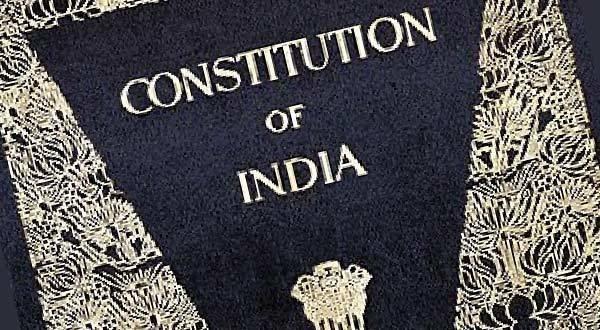
We are living in times where social norms and values of the Constitution are being violated time and again. The increasing atrocities on dalits and the lynchings of minorities in the name of cow-beef have changed social equations in a drastic way during the past few years. This in a way is part of the ascendance of a politics of communalism which believes in narrow, sectarian religious identity as its defining point. This may further worsen with the big mandate for Narendra Modi in the 2019 Lok Sabha elections. In the aftermath of the elections leading to his return to power, Modi, in his victory speech, made certain observations that are very disturbing on the one hand, and give an idea of shape of things to come, on the other.
Modi stated that this election campaign had unmasked the ‘deceitful’ claims of secularists and added that now they can’t ‘mislead’ the country. As per him, secularism as a mask had been destroyed in the 2019 elections and that sit was a cover for minority appeasement. He stated that the minorities had been “deceived and cheated” by the parties that claim to be secular.
This statement was not just made in the euphoria of electoral victory. For communalism, the deeper agenda is to do away with the practice of secularism. It is true that there had been aberrations and weaknesses in the practice of this concept of secularism, with fallacies like the reversal of the Shah Bano judgment or opening the gates of the Babri Mosque for Shilanyas. The assertion that the minorities have been appeased is a total lie. The reports of the Gopal Singh Commission, Rangnath Mishra Commission and Sachar Committee tell us volumes about the worsening plight of Muslims. Some fundamentalist elements within the Muslim community have been promoted, but the community as a whole has been economically marginalised and subjected to social insecurity. Going beyond the obvious, one needs to understand why the shortfalls in the practice of secularism have dogged our nation?
Secularism has been defined and interpreted various ways. In the Indian context, Sarva Dharma Sambhave (equality among religions) has been the major interpretation. Also, that the State will not interfere in matters of religion and religion (clergy) will not dictate State policy. This has been the major understanding of this concept of secularism, which is the core and integral part of the concept of democracy. Some examples of this are in order. In the wake of the demand for renovation of the Somnath Temple, Gandhi said that the Hindu community is capable of building its own temple. While his disciple Nehru did follow Gandhi’s path in times to come. The same Nehru later termed the dams, industries and universities as ‘Temples of Modern India’.
Gandhi in his own way puts it brilliantly when he says, “Religion and State will be separate. I swear by my religion, I will die for it. But it is my personal affair. The State has nothing to do with it. The State will look after your secular welfare…”
Social scientist Rajeev Bhargava points out that secularism “…combats not just discrimination and other worse forms of inter-religious domination such as exclusion, oppression and humiliation. It is equally opposed to intra-religious domination, i.e. the domination (of women, Dalits, dissenters) within every religious community”
Secularism did not have a smooth march in India. It came up with the rising classes during the colonial period. The classes that came up with changes like industrialisation, communication and modern education. They called this the process of comprehensive change in ‘India as a nation in the making’. The streams, like those represented by Bhagat Singh, Ambedkar and Gandhi, made it the foundation of their political ideology and struggle for a better society. They stood for Indian nationalism. While the declining classes of landlords and kings, shaken by the changes in the social fabric and loss of their hegemony, came up with communal politics. This communal politics, in turn, had a bifurcation -- Muslim communalism and Hindu communalism. They dreamt of a Muslim Nation and Hindu Nation, respectively. As Professor Bipan Chandra points out, communalism regards a community of one religion as a nation.
In India, communalism went through different phases -- mild, moderate and extreme. Its understanding is that people of one religion have similar interests, which in turn are different from those belonging to the other religion, and so the religious communities are made to pitch against each other. This politics regards the ‘other’ community as a threat to its own self. At the same time, intra-societal hierarchies are brushed under the carpet, as the deeper agenda of these groups is to maintain those hierarchies of caste and gender.
One of the weaknesses in the practice of secularism in India has been the tremendous opposition from communalism, which has been on a rise. While in Pakistan, Muslim communalism was strong right from the beginning; in India it has become stronger during past four decades or so. Its strength has been founded on polarisation, which is an outcome of communal violence. Its issues are those of identity, such as the Ram Temple, Love Jihad, Ghar Wapasi and holy cow-beef. It is this communalism which has stood as a counter to the secular ethos of the country; it is this communalism which is the major obstacle for secularism being properly implemented. There are many factors which have been conducive to and are helping in the promotion of divisive politics, and one of them is the non-completion of the secularisation process, the process whereby the power of the landlord-clergy duo is abolished in a society marching towards democracy.
In India, due to colonial rule, the national movement had to direct its energy primarily against the colonial rulers, while the landlords-kings, to be later joined by some elite middle classes, continued on the margins, breathing life into communalism, leading to the country’s Partition, among other negative phenomenon in the society.
Surely India’s plurality and diversity, though currently under cloud, will not allow secular values to be eclipsed by sectarian politics, which is currently on the prowl.
Ram Puniyani is an author and human rights activist. The views are personal.
Get the latest reports & analysis with people's perspective on Protests, movements & deep analytical videos, discussions of the current affairs in your Telegram app. Subscribe to NewsClick's Telegram channel & get Real-Time updates on stories, as they get published on our website.









